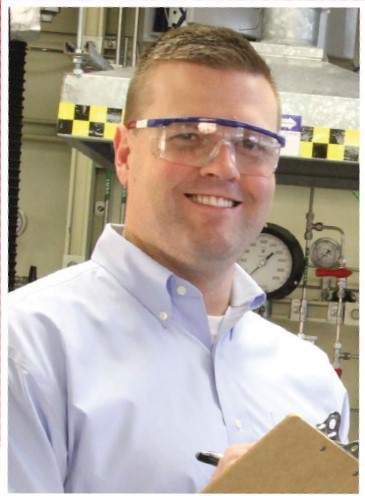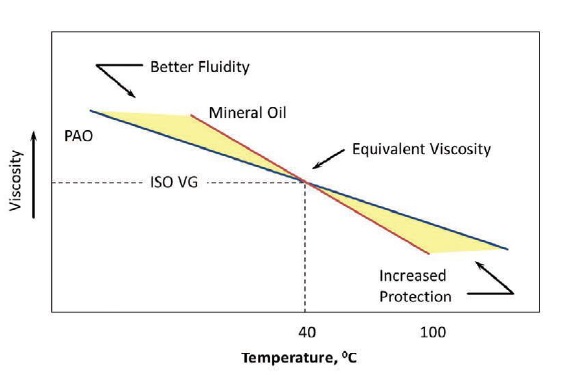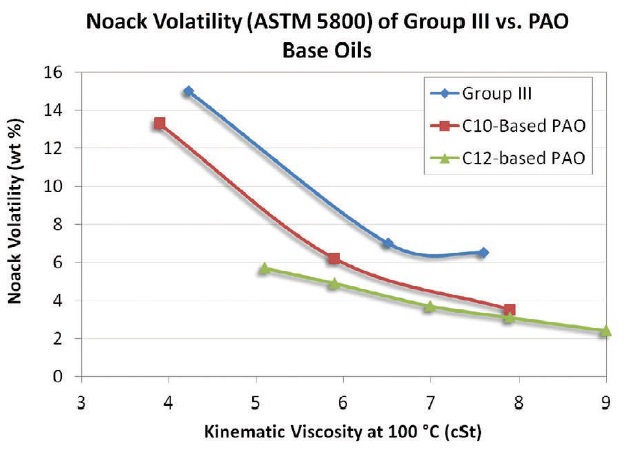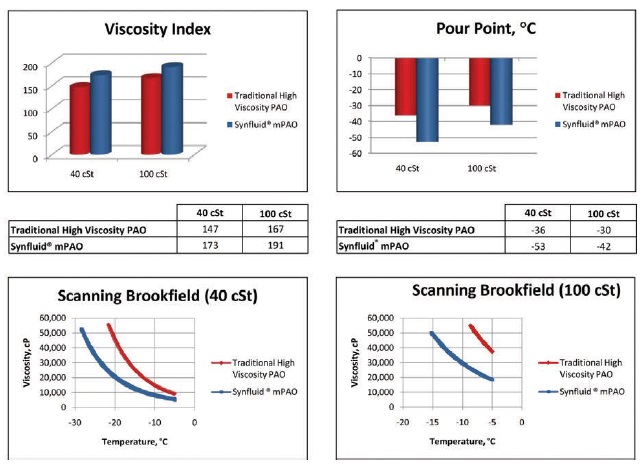20 Minutes With Jay Bickett
Karl M. Phipps, Contributing Editor | 20 Minutes March 2013
Chevron Phillips Chemical’s global business manager for polyalphaolefins discusses long-range supply issues and new applications.
JAY BICKETT - The Quick File:
WORK EXPERIENCE
Jay Bickett is the PAO global business manager for Chevron Phillips Chemical Company LP in The Woodlands, Texas, where he has worked since 2002. His primary responsibilities involve managing the company’s global PAO business and marketing of their metallocene polyalphaolefin (mPAO) products. Previously, he served as Western regional sales manager (2010-12), heavy-olefins commercial manager (2007-10) and account manager (2002-07).
In addition, he worked from 1997 to 2002 at Basell Polyolefins in Troy, Mich., and held several positions as a marketing program manager, account manager and technical sales representative.
EDUCATION
• Master’s of Business Administration, Marketing and Finance – University of Michigan, Ann Arbor, Mich., 2005
• Bachelor’s of Science, Chemical Engineering – The Ohio State University, Columbus, Ohio, 1997

Jay Bickett
TLT: From a global perspective, what is the long-range supply situation for PAOs?
Bickett: Polyalphaolefins are very high-quality synthetic base oils that are used in some of the most technically demanding lubricant applications. The feedstocks used to make PAO are normal (also called linear) alpha olefins or NAO. The most commonly used NAO monomer is 1-decene, but substantial quantities of 1-octene and 1-dodecene also are used.
One of the biggest factors influencing PAO capacity is the limited availability of 1-decene. Until NAO producers expand capacity of the monomers used to make PAO, we are unlikely to see significant expansion of PAO capacity based solely on decene. In the meantime, technology breakthroughs such as Chevron Phillips Chemical’s high viscosity PAO based on octene feedstock could help increase PAO capacity.
TLT: Are there new specific applications that may bring more interest to PAOs?
Bickett: PAOs allow lubricant blenders to make products that meet the requirements of demanding situations. These challenges may arise from the application of the lubricant such as operating temperature extremes or the need for extended drain intervals. They can also be the result of property requirements for the base oil such as lower HTHS viscosities and excellent volatility.
As environmental regulations become more stringent, PAOs also will have a greater impact in helping OEMs meet new restrictions measuring emissions and fuel efficiency.
In Europe, the Euro VI regulations will go into effect in 2015, which will effectively require a “luxury tax” on vehicles that exceed an emission of 130 grams of CO2/km. The U.S. Corporate Average Fuel Economy (CAFE) regulations also are becoming more stringent, including requirements by the Obama Administration requiring that cars and light-duty trucks have a fuel economy of more than 54.5 mpg by 2025. The high quality performance of PAO-based lubricants are needed for compliance with both guidelines.
TLT: Tell us about Chevron Phillips Chemical’s recent PAO acquisition in Europe.
Bickett: On Dec. 1, 2011, Chevron Phillips Chemical International NV acquired a PAO plant in Beringen, Belgium, from Neste Oil, NV, an indirect wholly owned subsidiary of Neste Oil Corp. This is a strategically important acquisition because it establishes a European PAO production base for Chevron Phillips Chemical and expands our PAO capacity to better serve our customers and their growing demand.
The effective capacity of the Beringen plant is approximately 60,000 metric tons per annum, which means our new combined capacity exceeds 100,000 metric tons per annum when we factor in the capacity at our Cedar Bayou plant in Baytown, Texas. Our PAO technology and operations will build upon Chevron Phillips Chemical’s solid position as a leading normal alpha olefin supplier.
We have been pleased with the performance of the team in Beringen and look forward to continued growth in the PAO market.
Viscosity Change with Temperature

TLT: What percentage of PAOs are used in automotive applications versus industrial applications?
Bickett: PAOs are used in a large percentage of automotive applications in Europe and Asia, with a growing demand in the U.S. The focus in Europe has traditionally been on high-performance vehicles, but today drivers of sedans are using more PAO-based lubricants in Europe, as well as in the U.S. than ever before. In the U.S., there is also a large demand for PAOs in industrial applications.
On a global basis, transportation and industrial applications are fairly evenly split, each accounting for about 50% of PAO demand.
TLT: How are new advances in automotive engine design affecting the PAO market?
Bickett: In order to meet consumer demand for more fuel-efficient vehicles, auto manufacturers are continually looking for new ways to design engines with drivability, at least as good as their predecessors but with improved fuel efficiency and lower emissions.
Thus we see the development of smaller engines that require less fuel without compromising vehicle power. High-performance lubricants are needed to protect these engines because of their ability to lubricate in extreme temperatures, transfer heat and resist oxidative degradation. Using a high-quality PAO allows manufacturers to produce a low viscosity lubricant, which requires less horsepower for pumping, while still protecting the engine.
Additionally, the right transmission fluid can help reduce fuel consumption, while protecting the transmission and reducing warranty claims.
All this bodes well for lubricants made with PAO, as they provide excellent protection for moving parts in extreme environments while conserving energy.
TLT: How long has Chevron Phillips Chemical been involved in PAO development?
Bickett: One of Chevron Phillips Chemical’s legacy organizations, Gulf Chemical, was the first to develop and commercialize the patented technology used for the continuous manufacturing of PAOs and began production of our Synfluid® PAO in December 1980. This same fundamental technology is used by major low-viscosity PAO producers today.
Since our early beginnings, we have expanded our process and product capability by improving the oxidative stability of PAOs and even developed the first 1-dodecene-based PAO. We’ve also commercialized 1-octenebased, high viscosity PAOs using our own proprietary metallocene technology (mPAO). Synfluid mPAO 40 and mPAO 100 provide formulators the best balance of high viscosity indexes and low pour points.
TLT: How do Chevron Phillips Chemical’s new mPAO products differ from traditional high viscosity PAOs? What opportunities do they open for new applications?
Bickett: Our new Synfluid mPAOs offer significantly higher viscosity indices and much lower pour points than traditional high viscosity PAOs. Formulators also can benefit from other mPAO property attributes, including tendencies towards lower foaming and lower coefficients of friction.
Somewhat related to the lower pour point is the improved low-temperature viscometrics. For example, at -25 C the cold-crank-simulator viscosity for our mPAO 100 is 4.5 times less than it is for traditional non-metallocene PAO 100 cSt. These lower temperature viscometrics and pour points allow formulators to use Synfluid mPAOs in lower-temperature applications where traditional high viscosity PAOs previously could not perform.

TLT: What excites you the most about the future of PAO?
Bickett: PAOs and the fluids made from them do a lot to improve our lives, and do it in ways that most people outside the industry never realize. Even though PAOs have been around for a while, producers and formulators are still finding new ways to more fully realize their potential.
New applications are constantly being developed, and improvements in PAO products continue to emerge from producers. As long as lubrication challenges exist, high-quality lubricants and the products used to make them will be in demand. Chevron Phillips Chemical is pleased to be a significant contributor to the bright future of PAO.

You can reach Jay Bickett at bickejl@cpchem.com.